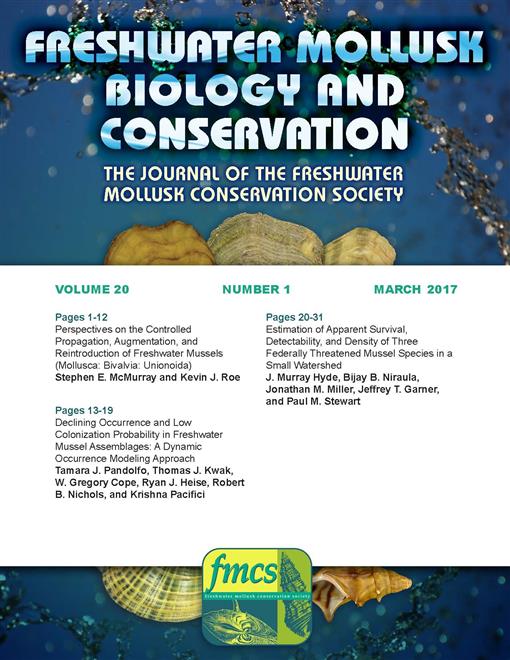J. Murray Hyde, Bijay B. Niraula, Jonathan M. Miller, Jeffrey T. Garner, Paul M. Stewart
Freshwater Mollusk Biology and Conservation 20 (1), 20-31, (1 March 2017) https://doi.org/10.31931/fmbc.v20i1.2017.20-31

Almost half of the mussel species in North America are imperiled, and eight species found in the eastern Gulf Coastal Plain drainages were recently federally listed. Information regarding the status of known populations of these species is either limited or outdated. Three sites in the Choctawhatchee River watershed (southeast Alabama), where federally threatened mussel species were known to occur, were sampled for mussels eight times each over 4 mo. Three federally threatened species, Fusconaia burkei, Hamiota australis, and Pleurobema strodeanum, and one common species, Elliptio pullata, were individually tagged and released using a robust mark-recapture sampling design. Each species-site combination having sufficient sample sizes was analyzed using a set of six candidate mark-recapture models chosen a priori, and estimates of apparent survival, detectability, and density were derived using the computer program MARK to average models. A total of 820 mussels, 427 of which are listed as federally threatened or endangered, were tagged over eight sampling occasions at three sites. Apparent survival of E. pullata varied among sampling occasions (0.96–0.99), while threatened species tended to have nearly constant survival. Detectability increased with mussel length for E. pullata at all sites (0.07–0.82), but with the exception of P. strodeanum at 8M1, length did not affect detectability of threatened species (0.11–0.52). Densities of threatened species (0.05–1.0 individuals/m2) were typically lower than those of E. pullata (0.15–1.78 individuals/m2) at each site. These data offer insights into the current status of known populations of threatened species at three sites in the Choctawhatchee watershed and will serve as a baseline against which the future status of these populations can be measured. These data also demonstrate the potential viability of using these methods for long-term monitoring of these populations.

